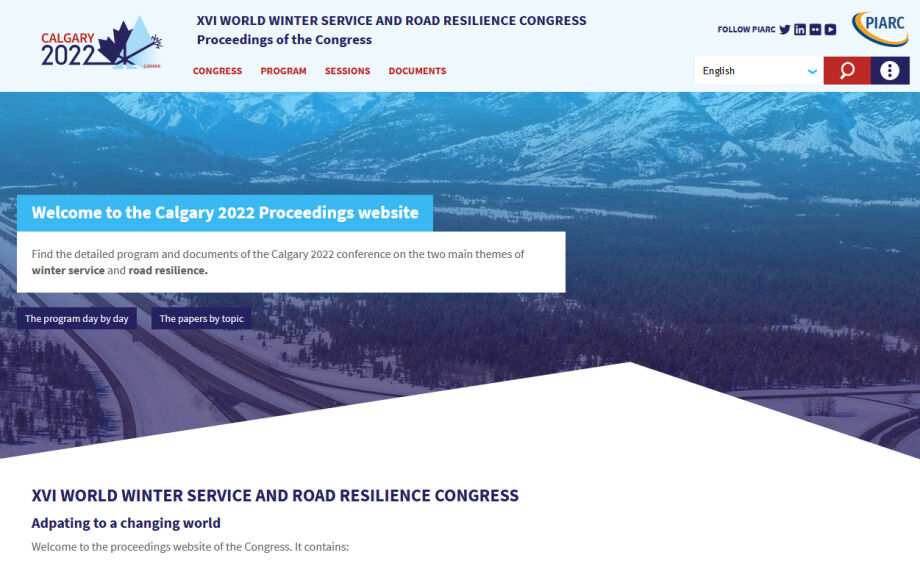XVI World Winter Service and Road Resilience Congress
Online, 07-11 February 2022
The XVI World Winter Service and Road Resilience Congress was held online on 07-11 February 2022. The overall theme for the Congress was "Adapting to a Changing World".
Proceedings of Calgary Congress 2022 available online!
The Final Proceedings of the XVIth World Winter Service and Road Resilience Congress are
now available, as a dedicated website, at the following address: https://proceedings-calgary2022.piarc.org/
Calgary 2022 was a completely different Congress from any other PIARC Congress, with several ‘firsts’:
- First Winter Congress to include another theme— Resilience—which is so important to PIARC member countries
- Fully online with content available ‘live’ and ‘on demand’ across 24 time zones
- Easy access from anywhere; only limitation was personal internet connection
The two strategic themes of the Congress allowed the organisers to have a Keynote Speaker for each theme: Max Perchanok on Winter Service, and Dr. Jean Andrey on Resilience. Simultaneous interpretation was provided in Spanish, French, and English for the Keynote Speakers, and all plenary and technical sessions to ensure that all delegates would benefit from attending this international event. PIARC honoured the best papers with its traditional Awards, which are featured in our magazine Routes/Roads.
A total of 785 participants from 53 countries gathered online with 60 sessions for this XVI World Winter Service and Road Resilience Congress.
Read the issues of Routes/Roads that feature the :
About Calgary
The City of Calgary is an exciting business centre and an outstanding meeting and convention destination. As the fourth-largest city in Canada, Calgary has a lot to offer visitors from around the world. In the downtown alone, you can discover over 1,000 shops, 200 restaurants and 50 entertainment spots. Within the city there are also 8,000 hectares of open space and parkland to explore.
As the urban backbone of Western Canada’s corporate and financial community, Calgary has come to symbolize rapid growth, enhanced quality of life and a future of unlimited horizons. Within this cosmopolitan small town, delegates and patrons will enjoy Calgary’s safe environment, cleanliness and legendary western hospitality. Not to mention the tantalizing array of pre- and post-meeting adventures awaiting you in the spectacular Canadian Rockies, only an hour’s drive from the city’s centre.

CONTACT - INFORMATION
PIARC (World Road Association)
Mail : info@piarc.org
